Blogpost
Presenting technological concepts to local decision makers
The Smart Cities Information System (SCIS)
Cities are confronted with targets on energy efficiency and CO2 reduction and lack a sound, clear and unbiased source of information to evaluate potential approaches they could apply. The Smart Cities Information System (SCIS) contributes to providing this information. SCIS is a project for the European Directorate General of Energy and executed by Th!nk E and five other European entities. Our contribution focuses on presenting and explaining relevant energy concepts that could be used in cities to realize their energy transition.
The need for unbiased information in city development
Technical and technological innovations, such as the new generation batteries, energy communities and concepts, such as fourth, fifth or even sixth generation heat networks, are often known to city administration. But the effective applicability—what it could or could not bring to their local context—can be less trivial. Information is often one-sided or too detailed or too technical. Within SCIS, booklets are developed that overcome exactly those challenges and present innovations and concepts specifically for the local planners and decision makers, illustrated with examples from other cities. We highlight 3 booklets that we delivered in the past year:
Residential PV and battery installations
The first booklet outlines opportunities, as well as possible challenges that come with increased uptake of PV and battery home installations. The full booklet can be found here. Below we discuss in brief the main observations.
The opportunities of a PV and battery installation at home
The combination of small-scale PV and home-batteries has been considered a potential valuable track to
- increase the amount of decentralized renewables,
- optimise residential electricity bills,
- decrease grid-dependency and
- avoid local grid congestion.
The benefit of small-scale local storage is that it is inherently local: local shifts in demand and supply at household level. Additionally, a coordinated operation of various decentralized batteries can contribute to congestion management in a larger area.
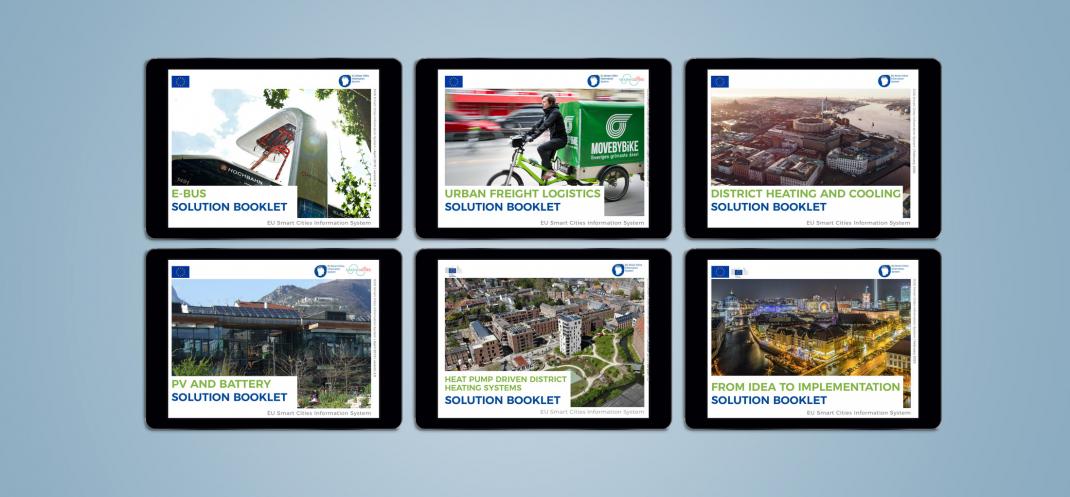 Solution Booklets
Solution Booklets
The challenges with PV and battery installations at home
It requires a sound preparation in order to harvest the diverse benefits. Different pilot projects experienced the need to ensure the comfort of end-consumers, including for example limiting the visits to residents. These pilots also highlighted that a careful selection of partners is necessary, making sure they have the right track record in the installation and operation of home-batteries and in the orchestrated operation of a large number of them (as virtual power plants). Additionally, legal expertise on responsibilities is required and a sound communication needs to be developed.
Conclusion: realistic expectations and a well-considered roll-out can give successful results
Attention needs to be paid to effective efficiencies when operating the home batteries as single units and especially when operating a number of diverse home batteries in a virtual power plant. Losses due to sub-optimal charging and discharging as well as poor estimations of the amount of energy in the batteries have shown to decrease round-trip efficiencies dramatically. A well-designed monitoring with close follow-up is therefore key in the effective success of PV and home-battery combinations.
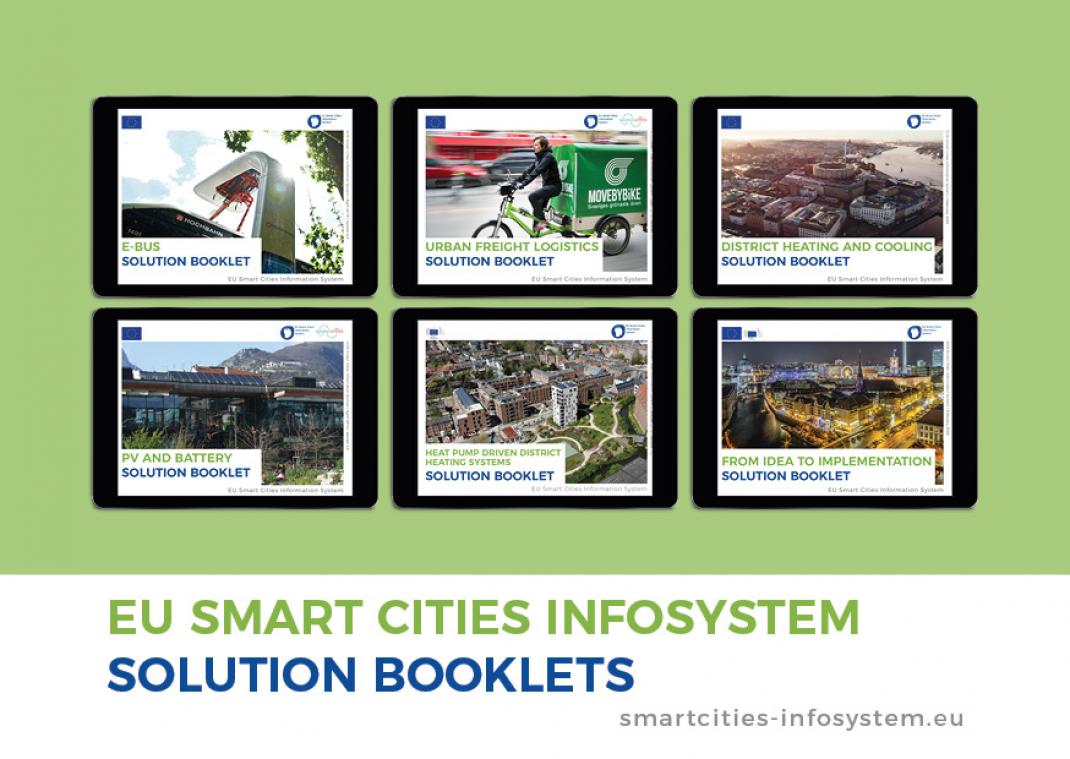
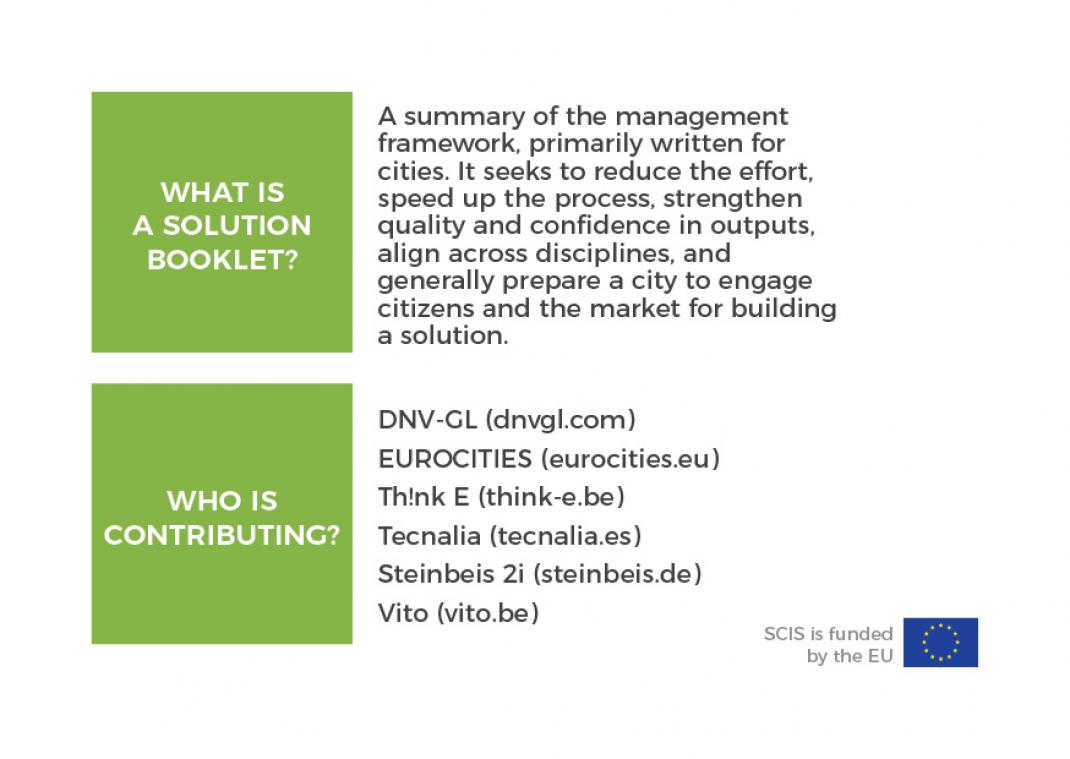 Solution Booklets
Solution Booklets
District heating with heat pumps
The booklet explains why integration of heat pumps in district heating systems can be the perfect solution to reducing pollution while increasing energy efficiency and use of renewable sources on district or city-level. The full booklet can be found here. Below we discuss in brief the main observations:
The potential of district heating systems
District heating systems can offer interesting benefits in reducing pollution, improving the use of local renewable sources or waste heat. Although their application is mainly in new developments, the integration of district heating in existing neighbourhoods has been proven successful if carefully designed and well-prepared.
The reason for the combination with heat pumps
District heating systems can be combined with a range of heat sources. This booklet focusses on the use of heat pumps. Heat pumps use a small amount of energy, usually electricity, to extract heat form a low temperature source and provide it to a higher temperature sink, such as the water in a heating network. Heat pumps are available in both small and large sizes, which allows using them either centrally in the district heating system or decentralized, using small scale heat pumps at the level of individual housing units or building blocks. Also, heat pumps are available to operate with various heat sources varying in temperature, e.g. ambient air, ground water, waste heat, geothermal sources or rivers. This flexibility widens the application range and ensures a heat pump driven district heating system is possible in nearly all cases.
Keys to success
Important for the success of district heating systems with heat pumps are a good legal and technical preparation and a correct and clear business case, as well as a transparent communication with all stakeholders. Further, a simple financial offer to the end-consumers and a convincing approach to unburden them are crucial for their acceptance. The business case can include the use of the electricity consumption in a flexible energy market, whether a central heat pump or a number of decentralized heat pump systems are used. A smart and coordinated consumption of heat can lead to peak load reduction, influencing investment and operational costs, as well as avoiding heat pump operation at moments with higher electricity prices. District heating systems with heat pumps come with a considerable investment cost but provide substantial benefits in the operation and further decarbonization of cities and city districts. The offering of heat instead of gas or electricity for heating enables the use of alternative pricing, de-risking the investment and hence offering a clear and predictable price to the end-consumer.
Further optimisation options
Using models with decentralised heat pumps further enables end-consumers to take a more active role and allowing consumption as well as injection of heat. This approach ensures a higher district- or city-level efficiency by including local waste and e.g. solar thermal sources. A good technical design ensures that all local benefits can be harvested from the design to the later operation.
Additional booklets
The booklets aim to explain the concept and present the lessons learned as they are formulated by the cities that implemented such projects. The conclusions include the suggestions on whom to engage and how to approach the implementation or uptake. Further booklet topics include:
- PV and battery Solution Booklet
- From Idea to Implementation Solution Booklet
- Building Envelope Retrofit Solution Booklet
- Citizen Engagement Solution Booklet
They can be found on the Smart Cities Marketplace webpage and the SCIS webpage.
If you need our creativity combined with our in-depth technical expertise to help in communicating your technical challenge, get in touch!
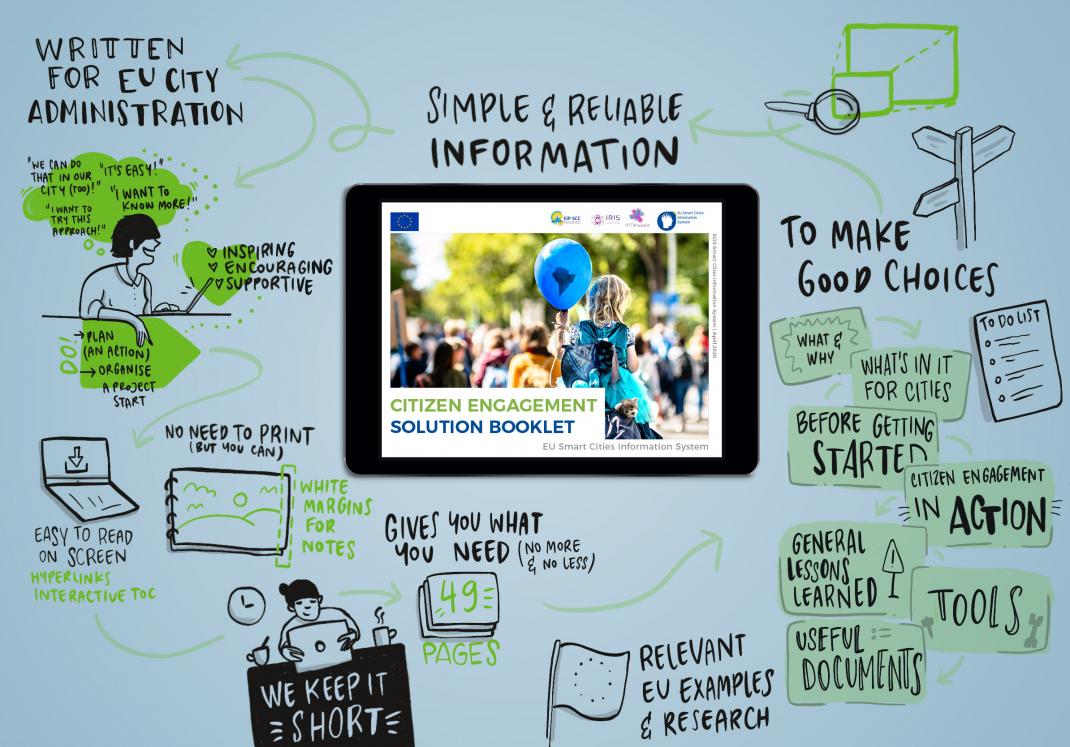 SCIS Solution Booklets
SCIS Solution Booklets
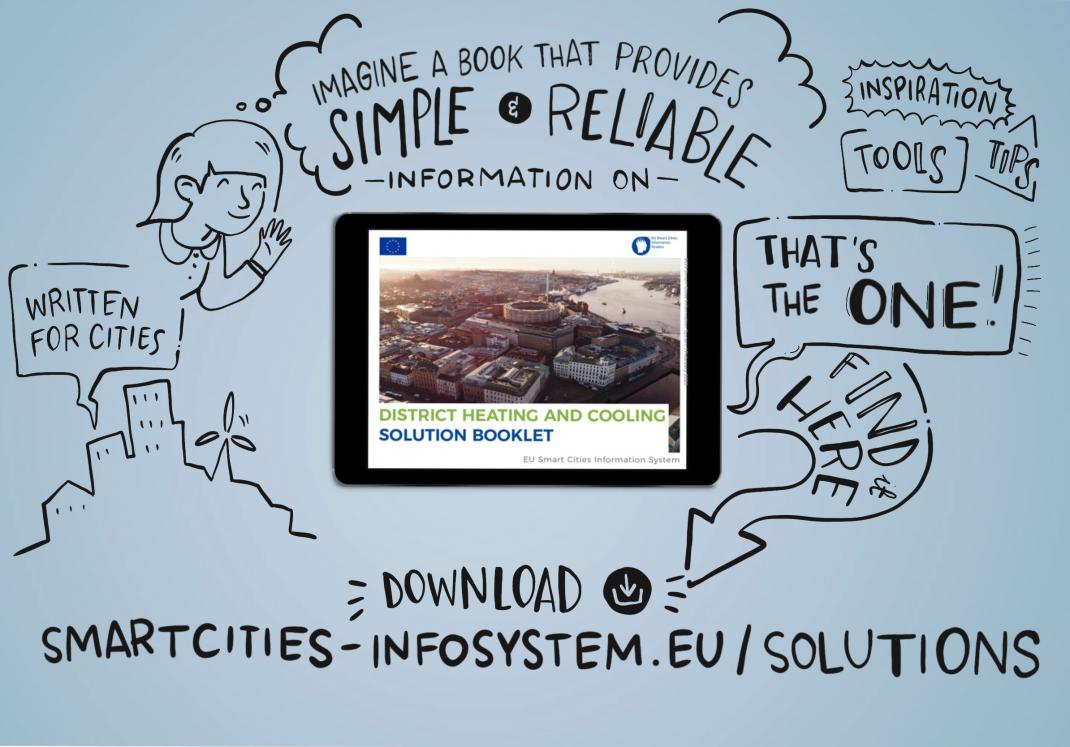 SCIS Solution Booklets
SCIS Solution Booklets
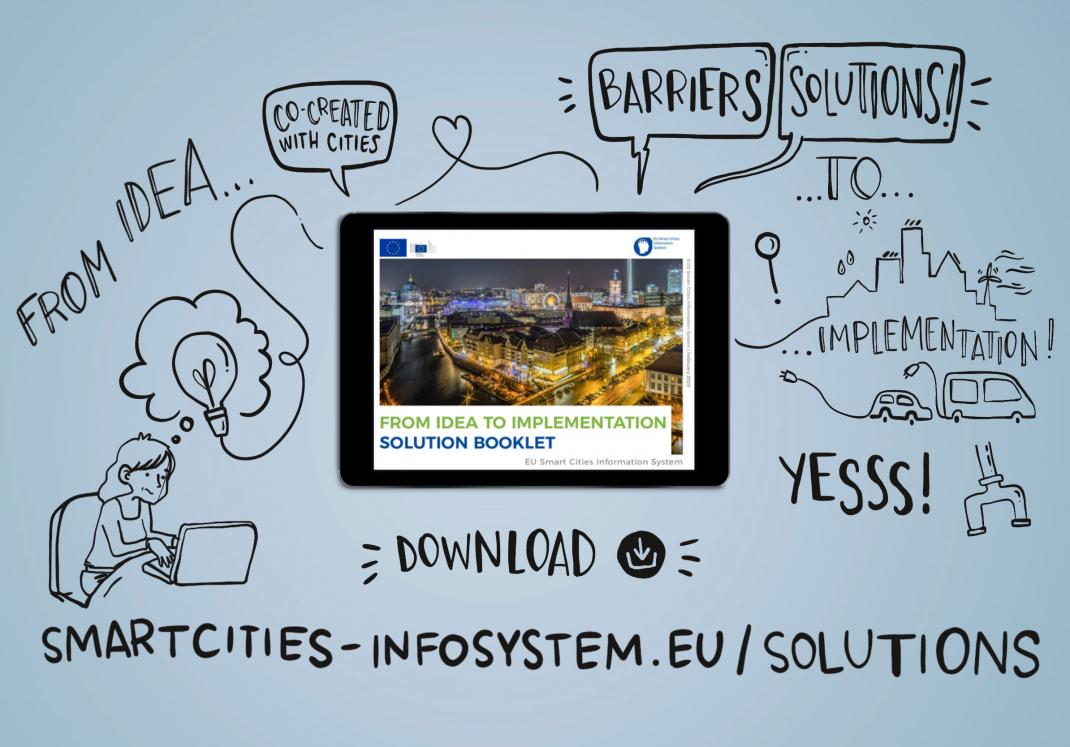 SCIS Solution Booklets
SCIS Solution Booklets
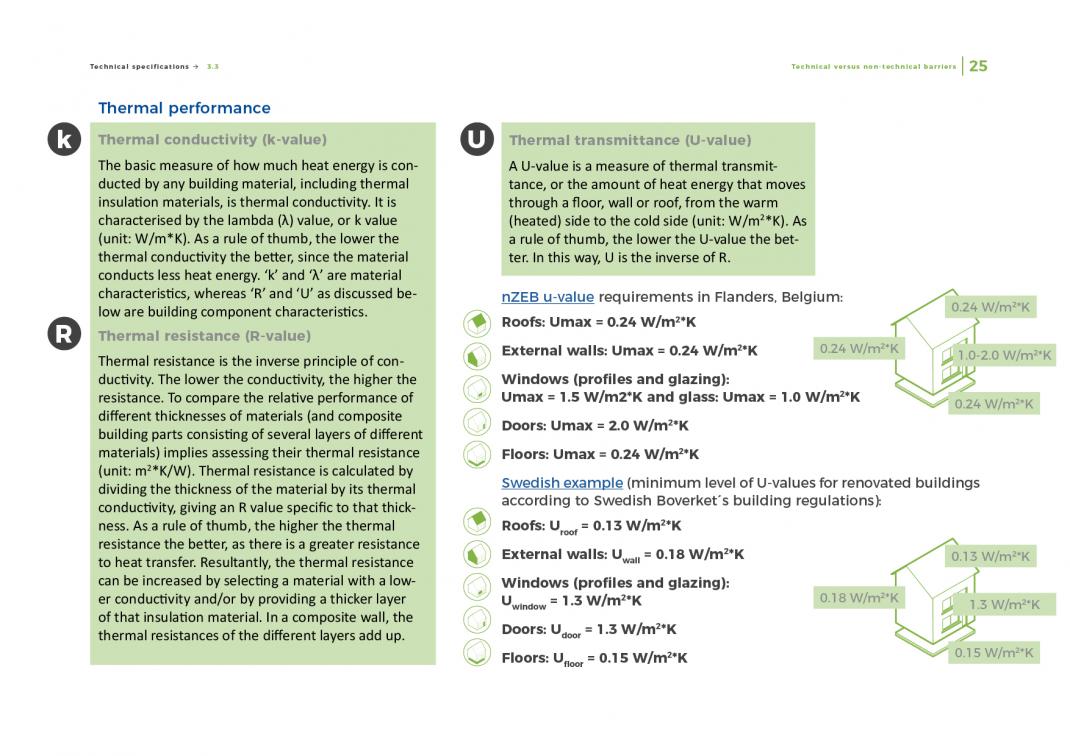 SCIS Solution Booklets
SCIS Solution Booklets
Contact us! Mail to info@think-e.be

